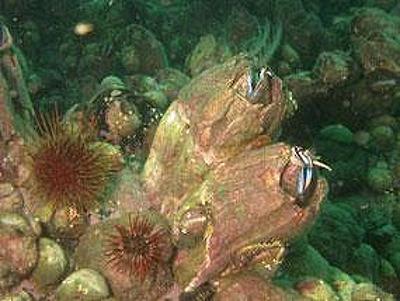 [Picoroco (Spanish): Austromegabalanus psittacus of family
Balanidae]
[Picoroco (Spanish): Austromegabalanus psittacus of family
Balanidae]
This Barnacle can have an outer shell as much as 12 inches long (30 cm). They attach to rocks in the intertidal and littoral zones, mostly between 7 and 66 feet depth (2 to 20 meters). They catch food with what were their legs, now feathery and called "cirri". They are found off the coasts of Peru, Chile, and the southern 2/3 of the Argentine coast, including around offshore islands.
These barnacles are smallest along the northern coast of Peru, and get larger going south. They are most harvested along the south central coast of Chile. They have been overharvested, so are now being studied for aquaculture, and for export to Japan, where they will certainly fetch an astronomical price. Photo by Dentren at en.wikipedia distributed under license Creative Commons Attribution-ShareAlike v3.0 Unported attribution required.
More on Barnacles.
After cooking, generally by steaming, the hard outer shell is broken apart and the lump of flesh is removed, with the beak (Operculum) still attached. The flesh is considered to taste much like crab, and the critter is filled with a salty brine that flavors the dish it is cooked in.